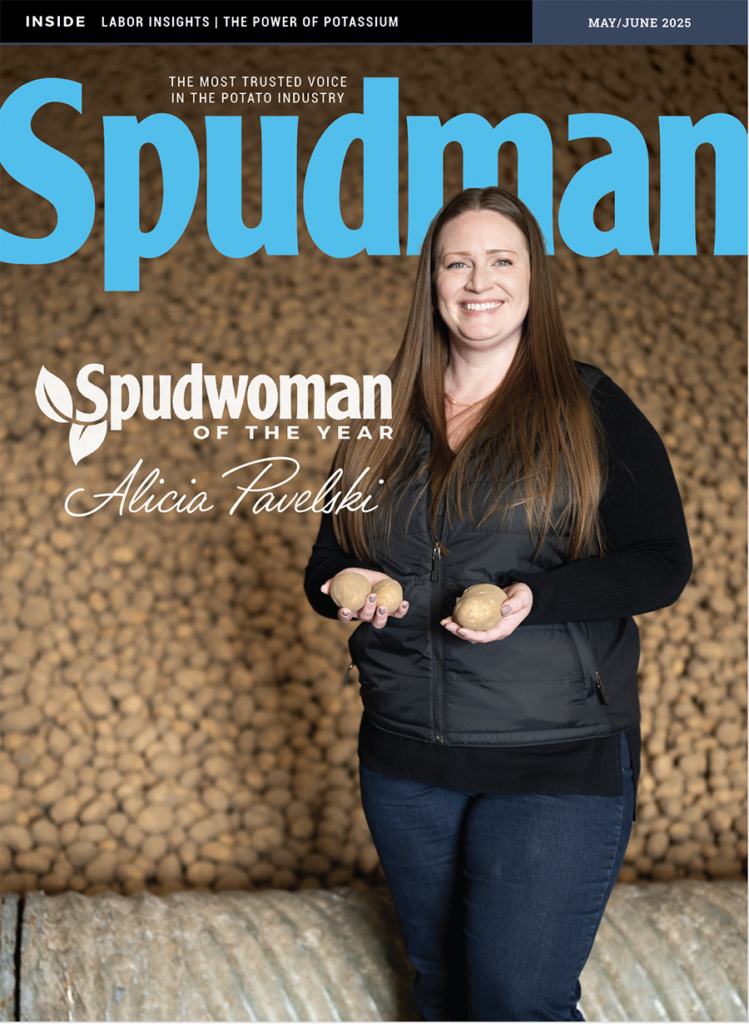
Start crop protection planning now to combat early season disease
{Sponsored} Potato growers faced slightly less disease pressure in 2017, but they must keep their guard up and have a crop protection plan in place for the upcoming season.
“Anticipating the presence of a pathogen and applying fungicides preventatively is the most effective way to control certain diseases that may impact yield and quality of the crop,” said Tye Shauck, technical service representative for BASF.
As early crop protection planning begins, it is important to take Rhizoctonia and black dot into consideration. They are two early season diseases that can have a major impact on crop quality.
“Growers need to manage for these diseases every season because they can survive in the soil for multiple years,” Shauck said. It’s very important to have a plan in place early and know what you’re going to do throughout the season.
“With many of the diseases we see impacting potatoes, by the time you see any symptoms on the plants, it’s too late to do anything reactively about it,” Shauck said. “The damage has already been done by the time you see symptoms. That is why growers need to plan ahead with preventative fungicide applications.”
Rhizoctonia, which is a soil borne disease, can impact the seed piece of the potato and the young growing potato plant as its emerging from the ground. BASF’s Priaxor® fungicide controls Rhizoctonia when applied in-furrow at planting.
“The effects of Rhizoctonia can reduce growth and productivity of the plant and in severe cases, may kill the plant before it emerges. Later in the season, there can be symptoms on the potato tubers themselves that appear as black scurf.”
Once the plant has emerged and it’s in the rosette growth stage, black dot — which can also be soilborne — can infect the stem, leaf tissue, roots, and tubers resulting in the development blemishes or lesions on the tuber surface. Priaxor fungicide should be applied early in the vegetative growth stage, around 6-inch rosette, as a foliar application to combat black dot.
Priaxor fungicide contains two active ingredients that are effective in controlling many diseases. One of the active ingredients, pyraclostrobin, may also provide plant health benefits. “It can increase stress tolerance and may increase nitrogen assimilation,” Shauck said.
Shauck also recommends growers integrate weed control into their early crop protection planning.
“Weeds can impact the yield of a potato crop because they compete for water, nutrients, and sunlight. Early weed control is important because many weeds are going to be germinating around the time the potato plants emerge” he said. “Controlling those weeds can be very important for reducing early season competition and making sure the crop gets a good start.”
Prowl® H20 and Outlook® herbicides from BASF are pre-emergent herbicides that are applied between planting and crop emergence. Applications before weeds germinate can control many weed species that rob resources from potato plants.
For more information, visit www.GrowSmartPotatoes.com or contact your local BASF representative.
Always read and follow label directions. Priaxor, Prowl H20 and Outlook are registered trademarks of BASF.
c. 2018 BASF Corporation














